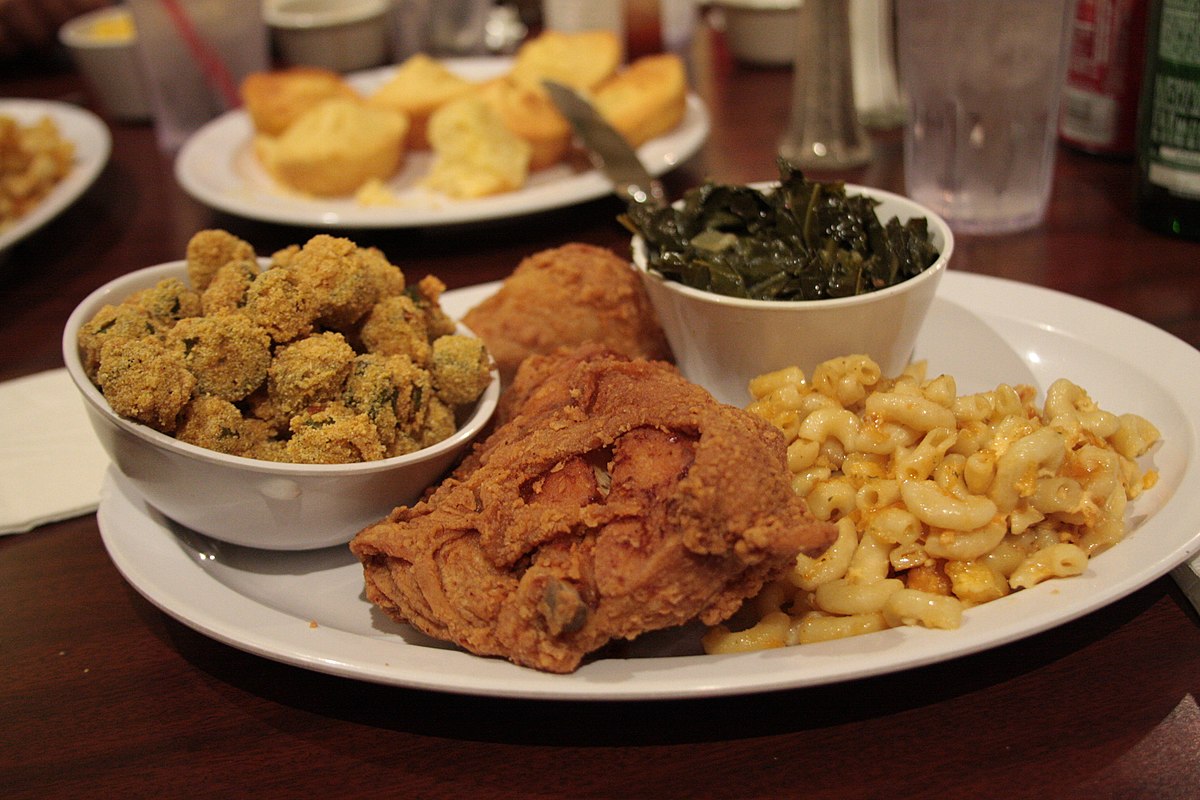African Contributions to Cuisine in America

From the time the first enslaved Africans arrived in America in 1619 (Jamestown) until present day, Africa has contributed greatly to cuisine in America. Many enslaved Africans brought the knowledge of their previous life with them, to include food recipes and, in some instances, the actual seeds of their homeland hidden in their hair and jewelry. The whites that enslaved them also arrived in the New World with examples of the unique foods they found in Africa. Some of these foods took a bit of a circuitous route through Europe, Asia and/or the Caribbean before arriving in America.
Decades before Asian rice made its way to America, African rice arrived with the enslaved. It soon established itself as a major Southern cash crop and slaves with knowledge of its cultivation were highly sought after. Eventually, rice became a dietary staple of the South and was included in many recipes, such as jambalaya. Jambalaya also originated in Africa and is a mélange of meat, rice and vegetables. (I always think of Neuman, of Seinfeld fame, doing a happy dance after getting his jambalaya from the Soup Nazi).
Another extremely popular food item that came to America via Africa is coffee. The earliest accounts of coffee beans show they originated in Ethiopia and eventually made their way to the Middle East by the middle of the 15th century. Coffee eventually arrived in Europe in the early 1600s and from there, it spread to the New World where it literally took root in Central and South America. The Dutch cultivated coffee on the island of Java, hence the slang term for the drink. Coffee finally arrived in what we now call America in the mid-1700s and its popularity exploded during the Revolutionary period.
Other popular foods that made their way here from Africa include okra, black-eyed peas, yams and the kola nut…you know, that nut used to make Coca Cola. Aside from African foods, slaves also brought with them food prep knowledge that we now take for granted with the two most important being the processes of frying and barbecuing, more on this below.
Lastly, let’s talk a little soul food. The term was coined in the late 1960s during the height of the black power movement when “soul” was used to describe African American culture. However, it has its beginnings in antebellum America. Many slaves were given a small allotment of food from their owners and were then allowed to prepare it as they pleased. This allotment, for many, usually consisted of cornmeal, some meat and/or fish, parts of unused livestock such as chitterlings and neckbones and maybe a few greens that their owners disliked, such as collard, beet, and/or dandelion.
Most slaves then utilized the cooking knowledge they brought with them from Africa or was passed down to them from their ancestors to create fried dishes using the cornmeal, such as catfish and barbecued meats, without the sauce of course. This is the early beginnings of what we now call soul food.
Once the slaves attained their freedom after the Civil War, this style of cooking spread throughout the South, to include the white population. It eventually made its way to the highest seats of power, especially when President Benjamin Harrison (1889-1893) employed a black chef named Dolly Johnson. President Lyndon Johnson (1963-1969) also enjoyed soul food in the White House which was prepared by Chef Zephyr Wright who also influenced his decisions regarding Civil Rights legislation.
So, as we celebrate Black History Month, let us not forget that African Americans have influenced just about every aspect of American life, to include music, sports, politics, science, entertainment, writing, medicine, and, as this post reveals, American cuisine.
You must be logged in to post a comment.